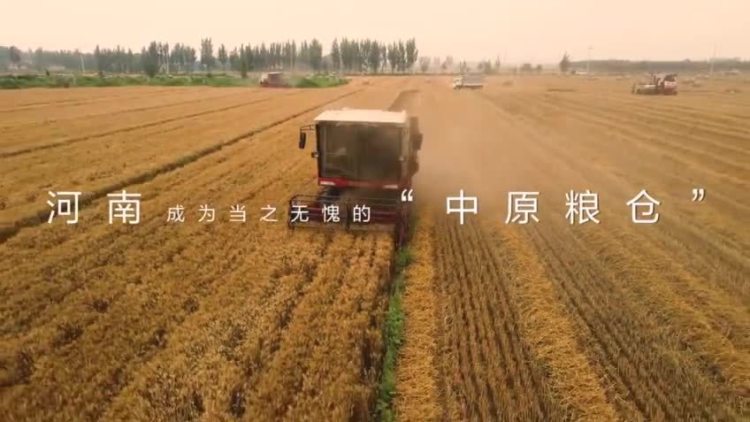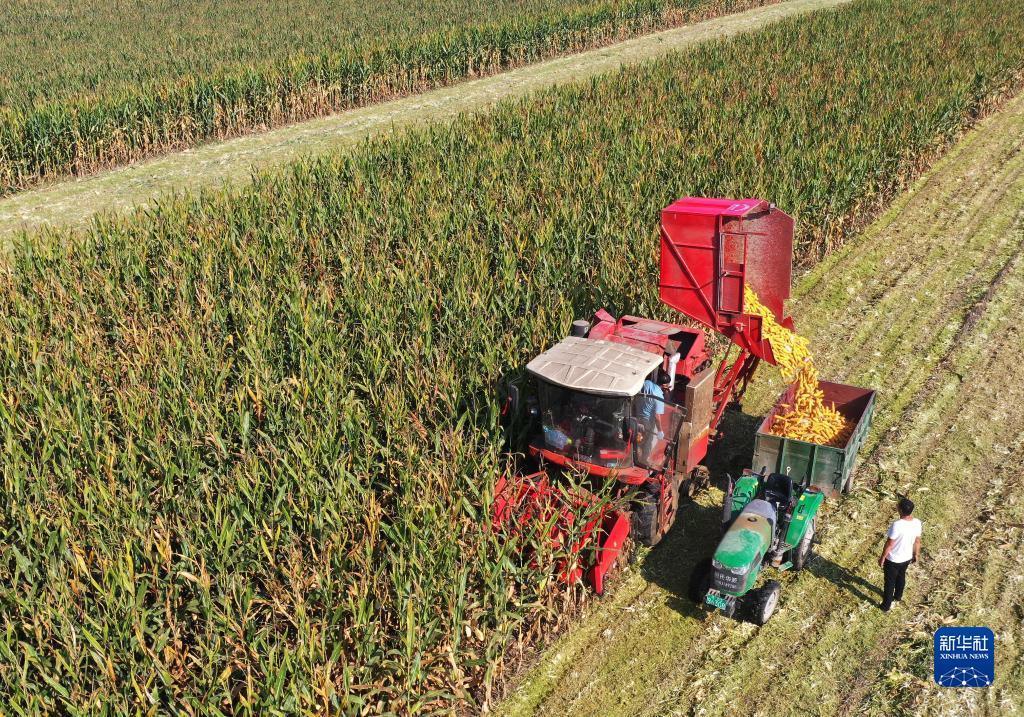农业科普教育活动项目实施方案.docx 13页
巴中市巴州区清江果品药材发展研究会农业科普教育活动项目实施方案 农业科普教育活动项目实施方案 巴中市巴州区清江果品药材发展研究会农业科普教育活动项目实施方案 贯彻落实《全民科学素养行动计划纲要》为全面提高我县农民科学文化素质,努力培养造就有知识、懂技术、懂管理、会业务的新型农民,特制定本实施方案。 一、指导思想以党的十七届三中、四中全会精神为指导,以地方经济社会发展为中心,以提高革命老区农民科学素质为核心以提高广大农民依靠科技致富的能力为目标。 以开展多形式、多内容的科普活动为重点,以全面提高农业产业质量、农业增效、农民增收为目的,广泛开展科普教育活动,促进“十二五”前三年我区社会发展贡献社会主义新农村建设,推进农业产业化进程,实现农业优质高产高效安全。 二、工作目标:通过开展科普教育活动,让农民进一步认识保护生态环境、节约水资源、保护耕地、防灾减灾的重要性,倡导健康生活、科学种植、现代农业科学发展的重要性。知识,让农民逐步掌握科学知识。 、热爱科学、学科学、用科学作为良好潮流,让农民进一步掌握(现代农业技术、无公害农产品生产、测土配方、施肥、技术应用、常见病害识别与防治) (高光效树木修剪中的病虫害防治等)改进种子和方法,整合配套技能,提高农民获取科技知识和依靠科技脱贫致富、发展生产的能力改善群众生活,更新思想观念,推动传统农业向现代农业转变。
三、活动形式和内容 1、活动形式为通过科普讲座、展览、培训、示范、咨询、参观、服务等方式普及科学知识,提高科学管理技能。 二、活动内容(一)举办无公害果药生产技术专题讲座。 (二)开展测土配方、施肥技术、作物病虫害识别与防治技术、旱作节水技术、水果套袋、肥水穴储、新品种、新技术推荐等实用技术培训。 (三)加强果树科普、新品种、新技术、展览宣传力度。 (四)建设巴中南江核桃、巴州柑橘、西南优质核桃品种科研和生产示范中试培训基地。 (五)组织农民深入园区学习参观,进行现场技术指导,帮助农民解决生产、销售中遇到的实际问题。 (六)积极开展下乡科普活动。 组织新技术、新时尚、新概念挂图巡展,布置科普。 (七)利用网络信息开通科技咨询热线,随时帮助农民解决问题。 (八)加大果树新品种的引进、研究和推广,特别是优质核桃品种的选育和推广。 4、参加者为全国范围内从事果药种植、加工、销售的会员(农户)和农业技术人员。 五、组织及实施流程协会将制定活动计划并组织活动前期准备工作。 通过县电视台、电话、网络或村政府通知活动时间、地点,按时在指定地点开展活动。 六、开展活动所需设备、材料清单 1、设备:笔记本电脑、投影仪、数码相机、数码摄像机、扫描仪、激光打印机、音响等设备及交通工具。
2、材料:科普书籍、光盘、宣传挂图、科普宣传栏、布置、宣传单等。 7、活动期间注意事项 1、加强组织领导。 协会要主动与地方党委、政府、科技部门沟通,把科普教育活动纳入政府“三农”工作,把它作为提高农民科技素质的重要任务。文化素质提升,做大做强果药产业,促进农民增收致富。 赶上,各乡镇要切实承担起组织协调、宣传配合的责任。 各职能部门也要在技术、人才、物资等方面给予全力支持,确保活动顺利开展。 2、注意农时、区域结合。 活动时间和内容要根据农时季节具体安排。 结合农时季节,根据农民对不同技术、不同地区的需求,有针对性地安排活动内容和时间,提高科普教育活动的适用性,促进科技成果转化,提高科技成果转化率。活动的有效性。 3、加强宣传报道。 此次活动要加大宣传力度,充分利用互联网、有线电视、广播等捷径以及报纸、传单等有效手段,扩大宣传覆盖面。 要对活动中推广的新品种、新技术、新模式、新举措、新突破进行深入探索和总结,宣传报道成功范例,扩大科普教育活动覆盖面,让让更多的农民享受到科普。 教育成果。 4、加强与企业合作。 与巴中大道农业实业公司、巴州区果品研究所、分公司、专业合作社联合开展科普教育活动,遵循公司+协会+合作社+基地+农户的运营模式,统一品种种植,统一收购价格、统一加工品加工、统一品牌销售,使科学技术的普及最终运用到生产中并体现在产品质量和经济效益上。
2011年5月12日延伸阅读:农业项目实施方案 XX县、XX乡旱作农业科技推广项目实施方案 项目名称:XX乡、XX县旱作农业科技推广项目 主管部门: XX 某县财政局建设地点:某县某乡某村某县财政局 2010 年 12 月目录 第一章项目区概况 31.1 地理位置及范围 31.2 水文气象31.2.1 水文 31.2 .2 气象 41.3 地形、地貌、地质条件 51.4 水土资源及利用现状 51.4.1 水资源及利用现状 51.4.2 项目区土地、土壤、植被、农作物情况61.5 项目区水利工程现状 71.6 项目区社会经济概况 71.6 .1 人口和劳动力 71.6.2 农业生产水平 81.6.3 地方财政和农民收入 8 第二章 项目概况 92.1项目实施 92.1.1 国民经济发展的需要 92.1.2 传统农业向现代农业发展的需要 92.1.3 地方经济社会发展的需要 102.1.4 增加农民收入的需要 102.2 项目实施区域102.3 项目效益 112.4 项目规模 112.5 主要建设内容 112.6 项目投资 112.7 资金整合安排 122.8 项目进度安排 122.9 组织保障措施 132.9.1 有效 加强组织领导 132.9.2 建立目标管理责任制 132.9.3 建立支持和激励机制142.9.4 做好培训和技术服务 142.9.5 做好秸秆综合利用 152.9.6 高度重视废旧塑料薄膜回收利用 15 第三章 预期效益 163.1 灌溉效益分析 163.2 社会效益评估 163.3 生态效益评估 17 第一章项目区概况 1.1 地理位置及范围 某县位于a 县东部,东邻b 县,西与c 县接壤。 它与南越ts分水岭上的某县相望。 它与北方的某个国家接壤。
地理位置:东径‘北纬’,南北长约180公里,东西宽约110公里,陆地总面积22171平方公里。 项目区位于某县某乡某村,东以某乡某村为界,西以某乡某村为界,南以某乡某乡为界,南以某乡某乡为界。北方。 地理位置:东经,北纬。 1.2 水文气象 1.2.1 水文xx河发源于天山东段支流北坡,多年平均流量1.36立方米/秒,年径流量4316.3万立方米。 49个月来水量3733.12万立方米,103个月来水量583.18万立方米。 m3,地表径流主要来源于基岩裂隙水、大气降水和山区雪水。 这条河的主要补给源头就是这里。 地表径流年际变化较大,季节间来水量不均。 集水面积467平方公里。 大气降水是水资源供给的根本来源。 河流径流主要依靠山区基岩裂隙水和大气降水作为河水主要补给来源。 山区降水一方面直接补给河水,另一方面又渗透补给山区地下水。 它以悬崖两侧和深谷中升泉的形式排到地表,直接汇成溪流流入山谷,形成地表径流。 XX河地表径流补给主要包括雨水、季节性雪水和地下水。 径流年内变化较大,但春季冰雪融化和夏季暴雨易引发短期大洪水,具有径流年际变化大的特点。 项目区水资源为XX河水,XX河多年平均径流量为4316.3万立方米。 根据XX河水管理站多年实测流量数据和《XX河、YY河流域地表水资源初步测算及梁河水库水文分析计算》,以凯肯河站和龙王庙水库站为关联分析,得出xx河的平均流量为Q=1.369/s。
年内分布相对均匀。 xx河P=50%正常水年,年径流量4131万立方米; P=75%枯水年,年径流量3122万立方米; P=95%枯水年,年径流量2090万立方米,年平均径流量4316.3万立方米。 XX河流域河水受大气制约,年际变化大,丰枯变化大,季节极不平衡。 冬季旱季较长。 除农业区使用外,大部分河水储存在龙王庙水库,只有一小部分储存在龙王庙水库。 它流失在黄土覆盖很少的第四纪杀伤层中并转化为地下径流。 1.2.2 气象项目区所在县、乡属中温带大陆性干旱气候区,自然降水量很少。 年平均降雨量298.2毫米。 春季降水量占全年降水量的20%-30%。 由于降水少,蒸发强(年平均蒸发量),土壤水分蒸发强烈,影响小麦的出苗率和生长。 项目区影响农业生产的主要自然灾害有干旱、冻害、霜冻和干热风等。 1、干旱:主要受春旱和夏旱影响,小麦等夏季作物遭受严重干旱,制约了小麦作物产量的增加。 年平均降水量298.2毫米,春季占年降水量的20%-30%。 由于降水量少,蒸发量大(年平均蒸发量),土壤水分蒸发强烈,影响小麦的出苗率和生长。 2、冻害:冻害是指农作物越冬和休眠期因低温造成的损害。 冬季一般雪量很少,没有稳定的雪层(厚度25cm)。 唯一的解决办法就是选育抗寒品种,精耕细作,冬季浇好水,加强越冬管理。
3、干热风:干热风是影响小麦高产稳产的灾害之一。 干热风是在气温较高、干燥、并伴有一定风量时发生的。 它的特点是风速大,主要是由高温引起的。 造成农作物损失。 1.3 地形、地貌和地质条件 项目区位于冲积扇平原中部,地势平坦,由南向北倾斜。 海面南高北低,地面纵向坡度1.9%。 山上覆盖着厚厚的风积黄土。 是XX乡主要旱作区。 该地区土壤养分高,适宜耕种。 1.4 水土资源及利用现状 1.4.1 水资源及利用现状 项目区地表水主要来源于XX河。 XX河是某县最大的河流。 上游没有现代冰川补给。 主要依靠大气降水供给。 源头海拔3340m。 集水面积487km2,径流系数2.91,年平均流量1.36m3/s。 XX河是一条靠冰雪融化、雨水、泉水补给的河流。 径流全年分布均匀,变化不大。 但春季暴雨易引发短期大洪水,导致径流年际变化较大。 年平均降雨量298.2毫米,部分直接补给河流,部分转化为山区地下水。 中山地带森林茂密,植被发达,雨量充沛,是径流的主要形成区。 低山地区森林消失,岩石裸露,降水减少,径流减少。 由于河水受降雨因素影响和制约,年际变化较大,丰干度波动较大,月际极不平衡。 冬季旱季较长。 河流离开山口后,一般流量不超过11.5公里。 除灌溉区外,大部分流失于黄土覆盖很少的第四纪砂卵石地层中,转化为地下径流。
各频率设计年径流量见表2-2; 正常水体年径流量4316.3万立方米,枯水体年径流量2044万立方米。 XX河上游山区植被较好,水土流失轻微。 XX河年悬浮泥沙输送总量为1.49吨,粒径0.5~30厘米的河床泥沙占悬浮泥沙搬运量的14~18%。 xx河年输沙总量1.63万吨。 (xx流域规划数据) 1996年,据自治区水文二大队调查,xx乡地下水补给量为1442.67万立方米/年,可开采量为1009.8万立方米/年。 那是一个中等规模的水源地。 201年地下水抽取量*面积310万立方米,地下水抽取系数0.38。 本项目主要采用地表水作为灌溉水源,因此本项目不考虑地下水。 1.4.2 项目区土地、土壤、植被、农作物情况项目区属丘陵戈壁地区,土壤为棕壤土类型。 土层厚度22.5m。 土壤表面有20厘米厚的棕色腐殖土。 质地为中土,耕作层疏松,土壤容重1.43/m3,田间持水量24%(重量比)。 根据该地区种植条件,以春小麦为主,小麦根系活动深度为40cm。 在灌溉条件下,适宜种植玉米、小麦、大麦、瓜类、向日葵等作物。 201*年末,XX乡耕地面积9.38万亩,其中水浇地9.22万亩。 全乡人均占有耕地8亩,林地面积1500亩,占耕地面积的2.2%。
XX村项目区土地总面积33平方公里,其中耕地面积2.6万亩,林地面积1000亩,占耕地面积的3.85%。 其中,某村耕地1万亩为中产田,1.6万亩为低产田。 当前土地利用状况的主要问题是林地面积小,田间林、路、渠、井等配套设施差,土壤肥力低,磷、氮缺乏。 1.5 项目区水利工程现状 XX乡灌区上游有龙王庙水库,设计库容1400万立方米,实际库容1260万立方米。 水库从XX河引水。 XX乡灌区引水渠道337.03公里,其中混凝土板防渗渠道总长223.78公里,配套桥、涵、闸门等建筑物3849座。 XX村项目区通过XX河干渠、新沟支渠、新沟支渠到达项目区。 新沟支渠流量1.2立方米/秒。 项目区供水有保障。 1.6 项目区社会经济概况 1.6.1 人口和劳动力 XX乡有4个行政村,总户数1831户,总人口8081人,其中农业人口7798人,非农业人口586人。 某村总户数687户,总人口2989人。 项目区涉及1个村委会,总户数171户,总人口732人。 1.6.2农业生产水平 201*年,XX乡粮食总产量1272.1万公斤,小麦单产300公斤,玉米单产400公斤,油籽单产227公斤。 年末牲畜存栏3.1万头,粮食作物平均单产低于全镇平均单产。
由于项目区低产田比例较大,加上干旱缺水,平均单产停滞不前。 1.6.3 地方财政与农民收入 201*年,XX乡农村经济总收入10346万元,项目区总人口732人,全乡农民人均收入5955元。 第二章项目概述 2.1 项目实施的必要性 2.1. 1、国民经济发展的需要。 党中央、国务院和中央领导同志始终高度关注和关心xj干旱区的发展。 对xj干旱区发展节水农业、人畜饮水、调整产业结构、加强生态环境保护和建设等作出重要指示,为xj干旱区发展指明了方向。区。 《中共中央 国务院关于积极发展现代农业扎实推进社会主义新农村建设的若干意见》进一步明确了现代农业发展目标。 近年来,自治区党委、政府工作会议多次提出要加快发展旱作农业和节水农业,尽快缩小与东部发达地区的差距,实现经济跨越式发展。 2.1.2传统农业向现代农业发展的需要。 发展设施和旱作、节水农业,是改变传统农业“受自然控制”局面、提高农业综合生产能力的根本措施。 这也是建设现代农业的内在要求和发展方向。 。 某县很大一部分耕地处于“靠天耕地、靠天吃饭”的较低水平。 虽然农技部门推广旱作农业技术,支持旱作农业技术体系,但国家提供了一定的财力。 、物质支持,但并没有改变干旱给农业带来的困扰。 农民收入增长缓慢,严重影响农业农村经济发展。
按照中央发展现代农业的要求,要改变传统农业生产经营方式,用现代发展理念发展农业,用现代物质装备武装农业,用现代科学技术改进农业。 因此,利用设施和旱农节是必要的。 以发展水农业为突破口,以设施化、高效产业为抓手,推进现代农业建设。 建立长效有效的抗旱机制,提高某县农业生产水平,达到农业增效、农民增收的目的。 2.1.3 当地经济社会发展的需要 某县是农业大县。 农业受干旱制约,农业和农村经济发展滞后,低于发达地区农业生产水平。 近年来,在培育特色产业和支柱产业方面,虽然初步建立了适合不同地区的特色产业,形成了小麦、玉米、牧草、蔬菜等农产品生产基地,但发展规模较小,发展水平不高。效率低下。 还需要进一步完善、建设和完善。 加强设施旱作节水农业建设,落实保护地耕作措施,是干旱条件下农业和农村经济发展的新要求。 2.1.4 增加农民收入的需要 在温饱问题基本解决后,增加农民经济收入就成为解决“三农”问题的关键一环。 传统的耕作方式和栽培管理技术,难以提高单位土地面积的产量和产水效率。 转变耕作方式,进一步调整产业结构,大力发展设施农业、节水灌溉和保护地耕作,是拓宽农民收入渠道、增加农民收入的必然选择。 2.2 项目实施区域 项目区位于 XX 县 XX 乡 XX 村,东与新湖村相邻,西与 ZBS 乡 HSL 村相接,南与 XX 乡相连,南与 XX 乡相连。北方。
地理位置:东经”,北纬5”,项目面积10000亩。 2.3项目效益1、建设高效节水灌溉示范区201*亩。 2、产量提高30%; 3、滴灌比常规地表灌溉节水40%-50%; 4、实现精准均衡施肥技术; 5、提高土地利用率,一般提高土地利用率5-7%; 6、降本增效效果明显,实现“五节一增”。 2.4 项目规模 1、河水自压滴灌201*亩; 2、改良土地201*亩; 3、引进玉米新品种2个; 4、农机具购置(农民自筹70%,国家农机装备项目补贴30%) 5、科技培训 2.5 主要建设内容为新建滴灌前池一座、新建滴灌泵房50m2,Φ315PVC管1272m,Φ250PVC管1161m,Φ200PVC管1317m,Φ160PVC管12273.2m,Φ90PE管13400m,Φ63PVC管769.2m,滴灌带19201*0m,排水井及闸阀井35口秒,21.71混凝土城m3,土方开挖21688.8m3,土方回填21688.8m3。 2.6 项目投资本项目投资1万元,其中:滴灌工程建设费1万元(含新材料、标准地膜、良种购买补贴、新技术推广等); 勘察设计费10000元; 施工监理费10000元; 培训费10000元; 科技人员差旅费1万元; 农业、土壤、肥料等专家咨询费1万元; 检测及实验室费用10000元; 材料费和印刷费10000元。
2.7资金整合安排本项目总投资1万元,投资来源由中央财政资金、地方财政配套资金和农民自筹资金组成。 其中:(一)申请中央财政资金1万元。 全部资金用于灌溉工程材料费(包括农业增产、抗旱高效新材料的技术应用)、设备费(包括农业增产、抗旱高效新机具) 、标准地膜、新材料费、工程机械作业费、良种购置补贴等。 (二)地方财政扶持资金和受益农户自筹1万元。 用于水土保持、增产技术、临时工程、独立费用、水土保持费、病虫害防治、农牧民培训、基本准备费等。 2.8 项目进度安排 本项目自年月至年末和月末。 具体进度安排为: 1、年月确定地块及面积。 聘请相关人员对项目进行规划并编制并报告实施计划。 2、1月至9月,利用“冬闲”,全力做好农牧民技术培训教育,采购工程材料、良种、地膜、农机具等。 3、按年、按月建立档案、卡片,完成农资发放工作。 4、年月,根据天气情况,从月底到月底,抓紧完成滴灌安装工程,组织相关技术人员,做好耕作的各项准备工作。 5、年月中,应根据天气和耕作情况,在年初十天内及时进行玉米播种。 6、每月组织相关人员做好农作物的田间管理,收获农作物。 7、年月组织协调相关人员回收废弃地膜、滴灌带。 同时,总结经验,组织相关人员做好项目的效益分析和总结。
2.9 组织保障措施 2.9.1 切实加强项目的组织领导,实行行政和技术双轨责任制和分级管理办法。 县、乡领导小组具体负责项目建设的组织领导、技术力量部署和任务落实,解决相关具体问题。 问题。 依靠县技术推广部门负责人和技术骨干组成的技术指导小组,做好技术措施落实、物资供应、资金配套等工作,做好试验、示范、推广工作推广新品种、新技术,组织科技宣传和培训。 Effectively strengthen the organizational leadership for the construction of the full-film double-ridge furrow sowing technology promotion project, combine the county and township implementation plans, clarify the development ideas of local dry farming agriculture, and ensure that everyone takes their own responsibilities, organizes, plans, and steps implementation. 2.9.2 Establish a target management responsibility system. During project implementation, focus on the three key links of area, technology, and materials, and strictly follow the project implementation plan to implement a target management responsibility system. County, township and village levels signed target responsibility letters to clarify their respective responsibilities and tasks. The project implementation unit and the township and village groups in the project area must work together, pay close attention to implementation, and implement a contract responsibility system for leaders and technical personnel to work in the countryside. Responsibilities and tasks are assigned to people, and they go to the countryside to ensure that the division of labor is clear and everyone has their own responsibilities. , regular inspections and strict supervision to ensure the implementation of various construction tasks. 2.9.3 The establishment of a support and incentive mechanism must strictly comply with district and county requirements, make good use of district and county subsidy funds, provide subsidies to households and localities according to standards, implement earmarked funds, and strictly prohibit misappropriation. Each project township should also use financial or in-kind subsidies to guide farmers to invest, invest in materials and labor, and actively participate in technology promotion.
Counties and townships will incorporate the assessment of the full-film double-ridge furrow sowing technology promotion project into the assessment of key rural work contents, and conduct regular and irregular assessments from aspects such as area implementation, material matching, standardization, introduction of improved varieties, construction of demonstration sites, pest control, and yield increase effects. Spot checks and strict assessment. Townships that over-fulfill tasks and achieve outstanding results will be rewarded in the form of awards instead of subsidies. 2.9.4 To improve training and technical services, rely on the county agricultural technology extension department to continue to implement the technical responsibility system in which technical personnel cover villages and demonstration households, go deep into the fields, provide face-to-face technical guidance and services, and solve production technology problems on-site to truly Let farmers master technical essentials and operating specifications, and strictly control technical training, film covering, fertilization and sowing, and field management, so as to provide strong technical support for the promotion of full-film double ridge and furrow sowing technology. Townships should establish the concept of active and scientific drought resistance, cooperate with the county agricultural technology extension department to provide pre-production and mid-production technical services, increase publicity and training, and focus on cultivating and training farmers' technical backbones. Through publicity and training in the form of class lectures, video playback, observation, field training, and white paper printing, this technology has been introduced into thousands of households. Provide technical support for the smooth implementation of the project. 2.9.5 Do a good job in large-scale promotion of comprehensive utilization of straw and full-film double-furrow sowing technology. While increasing grain production, it also increases a large amount of corn straw, providing sufficient raw materials for the development of animal husbandry. The project area should focus on cultivating follow-up industries, extending the industrial chain, vigorously developing livestock breeding production, improving the comprehensive utilization rate of straw, promoting the development of lamb, pig and other animal husbandry, and increasing farmers' income.
It is necessary to actively promote the planting of corn for both grain and feed use, promote the technology of ammoniation of corn whole plant silage and the technology of mechanical straw kneading, and explore new ways to combine planting and breeding in dryland areas to develop efficient agriculture. 2.9.6 Attach great importance to the recycling of waste mulch films. The large amount of waste mulch films produced by the promotion of full-film double-ridge and furrow sowing technology poses a potential threat to farmland and the environment. While promoting the technology, all project townships and relevant departments should strengthen publicity and education, adopt various forms to publicize the dangers of mulching film pollution to the broad masses of farmers, and guide the masses to protect the mulching film as much as possible during the production process, so that it can be covered with film for one year and two years. 使用。 For seriously damaged mulch films that really need to be removed, try to keep them until before sowing in the second year, and cover them while removing them to preserve moisture. The removed waste plastic film must be cleaned up in time to protect the ecological environment. It is necessary to study and formulate specific and feasible measures, establish an incentive mechanism for the recycling of waste mulch films, encourage processing enterprises and waste recycling enterprises to set up recycling outlets, increase the amount of recycling, and gradually form a virtuous cycle mechanism of use, recycling, processing and reuse. Chapter 3 Expected Benefits 3.1 Analysis of Irrigation Benefits Agricultural irrigation benefits are the result of the combined effects of agricultural and water conservancy technical measures, so irrigation benefits are calculated using the apportionment coefficient method. The apportionment coefficient of this project is determined to be 0.5 with reference to similar projects. The calculation of irrigation benefits after the project is completed is shown in Table 3-1. Table 3-1 Irrigation benefit calculation table Before project implementation, crop area per mu (mu) unit price (yuan) output (kg/mu) corn area (mu) after project implementation unit price per mu (mu) output (yuan (k) g/mu) production increase distribution Value water efficiency (10,000 yuan) Shared benefit coefficient (10,000 yuan) 201*1150333.2 Social benefit evaluation Through the promotion of technology demonstration projects, water resource utilization efficiency can be improved, production costs can be reduced, and crop quality and yield can be improved at the same time, which has significant social benefits. 。
(1) After the implementation of the project, the irrigation water utilization coefficient in the project area increased from 0.72 in the current year to 0.9 in the design year, improving the irrigation area by 2,000 acres, and increasing the annual water saving capacity by 157,000 m3. (2) Increase farmers' income and improve their living standards. Due to the adoption of new high-efficiency water-saving irrigation technology, labor intensity has been reduced, labor efficiency has been improved, business scale has been expanded, and product costs have been reduced. An additional grain production capacity of 440,000 kilograms, an additional output value of 660,000 yuan, and a total increase in farmers' income have been achieved. 330,000 yuan. The income level of farmers has been significantly improved. (3) It is conducive to promoting the development of related industries. Since the construction of high-efficiency water-saving has changed the traditional irrigation method, it has many advantages such as saving water, saving fertilizer, saving land, saving labor, increasing unit yield, etc., and has shown good economic benefits. The large-scale application of water-saving technology can also significantly improve labor productivity, improve product quality, and enhance the market competitiveness of crops. At the same time, it can drive the development of other related industries (such as plastics, chemicals, machinery, etc.). Freeing a large number of laborers from agricultural production to engage in other industries is conducive to the adjustment of industrial structure and enables farmers to increase production and income. It has very important practical significance for the stability of frontiers, economic prosperity and social stability, thus embodying Significant social benefits. 3



